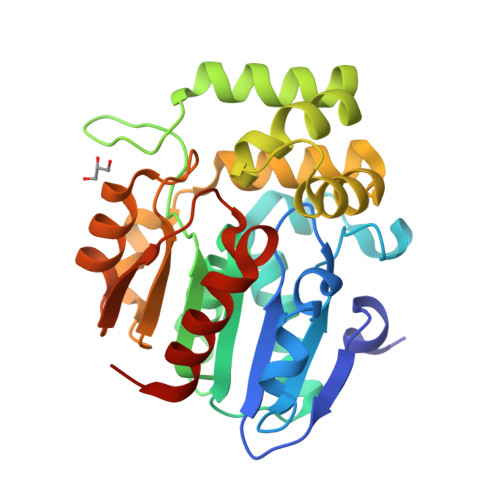Crystal structure and biochemical characterization of Striga hermonthica HYPO-SENSITIVE TO LIGHT 8 (ShHTL8) in strigolactone signaling pathway.
Zhang, Y., Wang, D., Shen, Y., Xi, Z.(2020) Biochem Biophys Res Commun 523: 1040-1045
- PubMed: 31973817
- DOI: https://doi.org/10.1016/j.bbrc.2020.01.056
- Primary Citation of Related Structures:
6J2R - PubMed Abstract:
Striga is a parasitic weed that disperses easily, and its seeds can persist in the soil for many years, presenting long-term threats to food security. If SLs stimulate the seed germination of root parasitic weeds before planting, weeds will wither due to no host. Therefore, it is necessary to determine the mechanism of strigolactone (SL) signaling in Striga to reduce the impacts of this parasitic weed. Striga has eleven different kinds of HYPO-SENSITIVE to LIGHT (ShHTL) hydrolases. Different ShHTL hydrolases exhibit distinct responses to SLs, despite these ShHTLs exhibiting more than 60% sequence identity. Currently, structural information is available for only five ShHTL proteins, and more structural information is needed to design Striga germination stimulants or inhibitors. In this paper, we report the crystal structure of ShHTL8, which is determined at a resolution of 1.4 Å. Scanning fluorimetry and HPLC assays indicate that L125, M147, M154 and I194 are important binding sites, and of which L125 may act as a key holder involved in the catalytic reaction. Additionally, the corresponding residue, Y124 of ShHTL1 and F135 of ShHTL2 also play a significant role in the substrate recognition.
Organizational Affiliation:
State Key Laboratory of Elemento-Organic Chemistry and College of Chemistry Nankai University, Weijin 94, Tianjin, 300071, China.

















